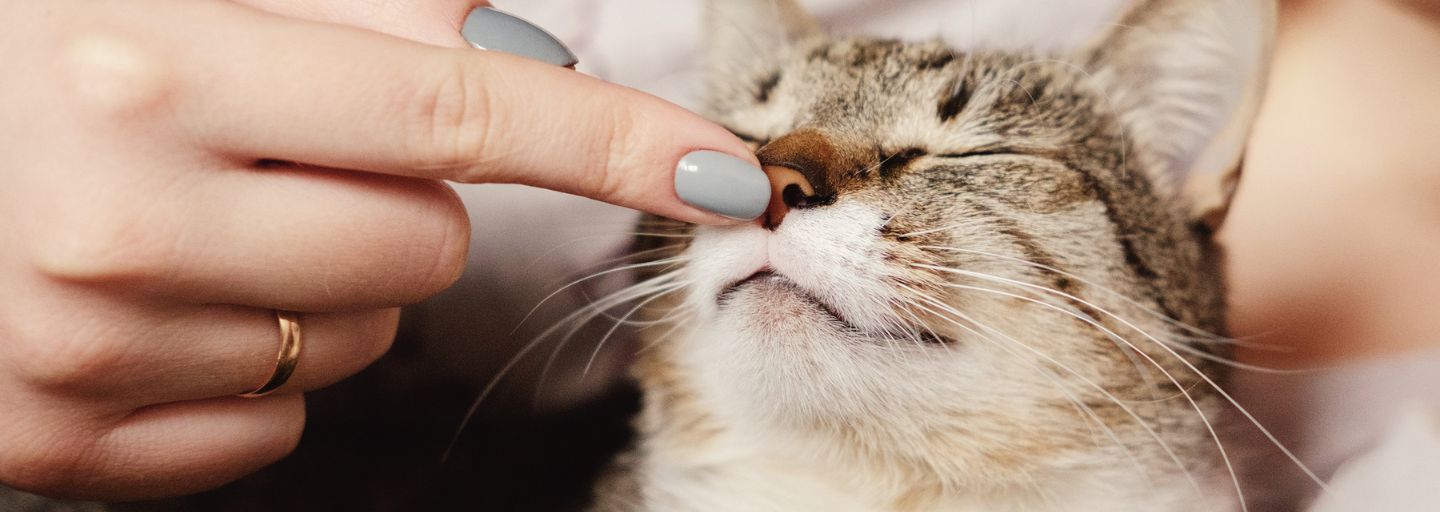From Tabby to Tiger: Understanding Feline Aggression
As cat parents, nothing confuses, frustrates and frightens us as much as petting aggression. Your cat begs for attention, loves the petting, but then bites you after only a few strokes.
It's easy to forget that under the warm, adorable exterior of your cat is an animal. You might have been victim to a bite or scratch when they’re upset or in playful mood. But there are a variety of reasons why they may act or appear aggressive when being held or touched. Let's take a look at them.
Fear
Sometimes it’s the weather or a kitchen door slamming. Whatever the reason, scared cats may not be not open for any sort of touching or cuddling.
Attempting to approach your cat in this state is risking a possibly aggressive reaction, not because they dislike you but because they’re in the middle of a panic reaction. Don't worry, though – most cats calm down a not long after being jarred. If they don’t calm down shortly after, consider speaking with your vet as there may be an underlying issue.
Pain
If your cat has a painful medical condition, like an abscess on the back or a bad hip, your touch or even the cat's perception that he may be touched in a painful area could cause the aggressive behaviour. In this case, it’s best to seek the advice of your veterinarian.
Intolerance to Petting
While some cats sprawl out for daily belly rubs, others have limits on how much touching they tolerate. Certain areas on your feline friend are off-limits for human hands. It’s nothing against you, it's just that he or she doesn't like being touched in those areas. For instance, cats tend to expose their stomachs when they feel comfortable with people, but don’t like being touched. It’s the fastest way for a surprise scratch!
The key is to stop petting before those signs appear. Over time, your cat’s tolerance level might increase.
There are a few things you can do to help improve your cat’s behaviour. These include:
1. Visit Your Local Vet
If your cat is frequently aggressive or reacts badly to touching on an area you wouldn’t expect, it’s best to have your cat examined by a veterinarian. It is important to find out if your cat has a medical condition that may cause pain when being petted.
2. Be Affectionate While Feeding
While preparing her food, talk to your cat. When she begins eating, gently stroke her a few times. This will help her associate being petted with a positive experience. Some cats don’t enjoy being touched while they eat, so if your cat begins growling or hissing stop immediately and try our other steps.
3. Be Playful
Instead of trying to force a hug from your unwilling cat, play with them a little. Try getting your cat to paw at a piece of string or chase after a laser pointer.
4. Give them a treat
Each time you share a moment of tenderness with your cat, give them a treat. Let them see that affectionate behaviour has its rewards.
5. Desensitisation
Another way is to desensitise your cat to improve their petting threshold. If your feline friend tolerates three strokes before their ears and tail signal distress, add one more stroke and then stop.
Try adding one stroke each week, and over time you can increase your cats’ threshold while avoiding a surprise bite.
The best thing we can do for our cats is be mindful of their body language and understand touching and handling from their perspective.
If you’re not lucky enough to have a cat who seeks out your affection, trying to entice that reclusive fur ball may take some determination on your part.
Your cat may never convert to a lovable lap cat, even after weeks of effort on your part, but at the very least you’ll strengthen the bond with your cat.



